The War on History
People have often asked me if something like the revisionist Israeli historiography to which I contributed in the late 1980s exists on the Palestinian side. Alas, I would say, there isn’t any yet—and it certainly won’t blossom in the ideologically restrictive, authoritarian territories under Palestinian Authority and Hamas control, nor in the Arab world. Still, it might happen in the Palestinian diaspora, in the open societies of the West. Occasionally, hesitantly, I would mention Rashid Khalidi and suggest that he might one day produce real, archive-based historical work that questions the basic assumptions, positions, and behavior of the Palestinians during the past 130 years of nationalist struggle and confrontation with the Zionists.
In 1997, while a professor of Middle East history at the University of Chicago, Khalidi published Palestinian Identity, which traced the emergence of Palestinian national consciousness over the late 19th and early 20th centuries. After moving to Columbia University (where he now holds the Edward Said Chair in Modern Arab Studies), Khalidi published The Iron Cage. In Palestinian Identity, he tried to push back in time, somewhat artificially, the emergence of a separate Palestinian Arab identity, distinct from that of the Arabs living in neighboring Syria-Lebanon, Jordan, and Egypt. Presumably, the older the provenance, the more legitimate and cogent are one’s claims to statehood. The Iron Cage focused on the Palestinian national movement during the years of the British Mandate (1917–1948) and the 1948 War, exploring why the Palestinians lost the battle against Zionism (so far) and failed to achieve statehood. The book contained glimmerings of self-criticism, meaning criticism of the Palestinian national movement, of which Khalidi and much of his distinguished family have always been a part.
Indeed, during 1991–1993, Khalidi was an official, presumably salaried, advisor to the joint Jordanian-Palestinian delegation, later the (PLO) Palestinian delegation, to the Middle East peace conference in Madrid and during the subsequent Israeli-Palestinian-American negotiations in Washington, DC. Interestingly, this fact nowhere appears in Khalidi’s Wikipedia biography and goes unmentioned in the short biographies of Khalidi featured in his various books. Presumably, publicly acknowledging this PLO attachment might have harmed his image as a credible, impartial historian. Similarly, Khalidi has always rejected being described as a “PLO spokesman” during the 1982 Lebanon War, and he continues to do so in this book. However, The Hundred Years’ War on Palestine has an autobiographical thread to it, and he does tell us that in summer 1982, “I acted as an off-the-record source for Western journalists.” The book also features a photo of Khalidi “helping out at a [PLO] press briefing at the Commodore Hotel, Beirut,” at least according to the caption.
In his earlier book, The Iron Cage, Khalidi’s criticism of the Palestinian national movement centered narrowly on the failings of the Palestinian leadership, especially the head of the movement during the 1930s and 1940s, Haj Muhammad Amin al-
Husseini, and on their abysmal failures to exploit the multiple openings history had afforded them for realizing Palestinian political aspirations. In The Hundred Years’ War on Palestine, Khalidi expands his criticism of the old Palestinian elites—from which he springs—to the PLO leadership under Yasser Arafat, which emerged from the refugee camps and replaced the old elite of “the notables” in the 1960s and 1970s. In addition, he thoroughly lambasts the leaders of the surrounding Arab states, from Gamal Abdel Nasser and Anwar Sadat of Egypt to the Assads of Syria, for constantly using and manipulating the Palestinians and their cause for their own ends, while failing effectively to help the Palestinians at crucial junctures between 1947 and 2019.
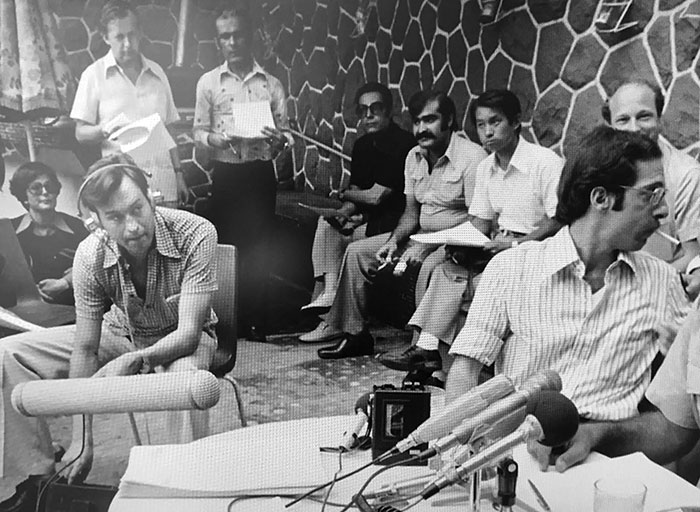
But, ultimately, The Hundred Years’ War on Palestine is no revisionist history, and Khalidi is no Palestinian “new historian.” In fact, the book turns out to be yet another somewhat turgid recitation of the traditional Palestinian narrative, its mantras being Western and Zionist guilt for everything that has befallen the Palestinians and a passionate, personal assertion of Palestinian innocence. It is studded with photographs and anecdotes of the Khalidi clan going back to the 19th century. One of the more striking protracted anecdotes is Khalidi’s description of his harrowing experiences, with a wife and two small children in tow, during the Israeli siege and shelling of West Beirut in 1982.
Khalidi’s bottom line is that Zionism is a “colonialist” enterprise, a doctrine enunciated in the Palestine National Charter of 1964. From this original sin stem all the evils of Zionism and all Palestinian suffering. The subtitle of The Hundred Years’ War on Palestine: A History of Settler Colonialism and Resistance, 1917–2017, says it all. Indeed, Khalidi goes so far as to say that Zionism is a “classic nineteenth-century European colonial venture.” But is it?
Colonialism is commonly defined as the policy and practice of an imperial power acquiring political control over another country, settling it with its sons, and exploiting it economically. By any objective standard, Zionism fails to fit this definition. Zionism was a movement of desperate, idealistic Jews from Eastern and Central Europe bent on immigrating to a country that had once been populated and ruled by Jews, not “another” country, and regaining sovereignty over it. The settlers were not the sons of an imperial power, and the settlement enterprise was never designed to politically or strategically serve an imperial mother country or economically exploit it on behalf of any empire. The land was known to lack natural resources. And most Zionists, rather than wanting to exploit the natives, were indifferent to their fate or wanted to simply see them leave (something Khalidi repeatedly acknowledges throughout the book).
Indeed, early in the book, Khalidi actually buttresses the Zionist position, perhaps without quite realizing what he is doing (and in blatant disregard of the last half-century of PLO propaganda, which maintains that the Jewish connection to Jerusalem and, by extension, to the whole of Palestine, is a myth). He quotes his great-great-great-uncle Yusuf Diya al-Din Pasha al-Khalidi, a one-time mayor of Jerusalem and member of the Ottoman Parliament, who back on March 1, 1899 wrote to the founder of political Zionism, Theodor Herzl: “Who could contest the rights of the Jews in Palestine? My God, historically it is your country.” (Of course, Yusuf Diya added that as Arabs now populated the land, there was no room for a Zionist influx, which could only lead to bloodshed.) As to the charge of Zionists being a cat’s paw of imperialism, Khalidi fails to tell his readers that between 1917 and 1948, the Zionists were far from tame British wards. After all, Zionist underground groups mounted a violent insurgency against British rule during and after World War II. More recently, Israel has been far from a willing instrument of what Khalidi would call “American imperialism.” Indeed, much of the recent criticism in the United States of America’s largesse to Israel has been based on questioning Israel’s strategic value to America.
Nonetheless, to drive home and buttress his definition of Zionism as colonialism, Khalidi begins his story in 1917. On November 2 of that year, the British government issued the Balfour Declaration, supporting the establishment in Palestine of a “national home for the Jewish people.” This famous declaration “launched” the conflict, he tells us. From that point on, as Khalidi would have it, the Zionist colonists, arm in arm with their imperial patron, set upon the native inhabitants of Palestine to supplant them. By this sleight of hand, Khalidi turns the Zionists into Britain’s agents. At one point early on in the book, Khalidi grudgingly concedes that “there is no reason that what has happened in Palestine for over a century cannot be understood as both a colonial and a national conflict.” But then he goes on to say that “our concern here is [with] its colonial nature” and thereafter inundates the reader with rhetoric and “facts” that point only to the “colonial” nature of the Zionist-Arab conflict, driving from the reader’s mind any inkling that Zionism is a national movement and that the struggle has always been between two national movements, each with—as I see it—a rightful claim to the land. Indeed, Khalidi explicitly tells us that this is not a struggle between “two rights.”
The story of Zionism, and its conflict with the Arabs, actually began in 1882, with the arrival of the first Zionists in Palestine, or the Land of Israel, which Arabs subsequently termed the start of “the Zionist invasion.” Inevitably, hesitantly, and haphazardly, the indigenous inhabitants resisted. In 1886, some 50 to 60 Arabs from the village of Yahudiya attacked the neighboring, new Jewish settlement (in Khalidi’s parlance, a “colony”) of Petach Tikvah because of a dispute over boundaries and trespassing, injuring four settlers and triggering the fatal heart attack of a Jewish woman. In 1908, in Jaffa—the port of entry for most of the early Zionist settlers—a group of Arabs attacked a Jewish couple strolling on a beach. Jews retaliated by attacking Arabs, and a mob of Arabs then stormed the Spector Hotel, a hostel that lodged recent immigrants, where 13 Jews were injured, some of them severely. The Jews called it a pogrom.
In November 1913, an Arab notable, Sheikh Sulayman al-Taji (al-Faruqi), published the following poem in the Jaffa Arab daily Filastin, against the backdrop of continuing Arab land sales to Jews:
Jews, sons of clinking gold, stop your deceit;
We shall not be cheated into bartering away our country!
. . .
The Jews, the weakest of all peoples and the least of them,
Are haggling us for our land;
how can we slumber on?
Anti-Jewish violence became endemic, with Jewish settlement guards—who were seen as symbols of the Zionist enterprise—regularly dying at the hands of Arab ambushers between 1911 and 1913. In April 1914, the British consul in Jerusalem reported, “The assaults upon Jews in the outlying districts are increasingly frequent.” So, the conflict began well before the Balfour Declaration and before the British conquered Palestine in 1917–1918 and briefly endorsed Zionism.
Khalidi’s thesis, as expressed in his title, is that the Zionists, in league with the British and then with the French and then with the Americans, have waged a perpetual war against Palestine’s Arabs. The book consists of six chapters entitled “The First Declaration of War, 1917–1939,” “The Second Declaration of War, 1947–1948,” and so on, concluding with “The Sixth Declaration of War, 2000–2014.”
Let us look in some detail at Khalidi’s coverage of the crucial years 1917–1948, which I believe are reflective of the quality of Khalidi’s history as a whole. In looking at the Balfour Declaration, Khalidi tells us that “the British Empire was never motivated by altruism.” Rather it issued from both a “romantic, religiously derived philo-Semitic desire to ‘return’ the Hebrews to the land of the Bible, and an anti-Semitic wish to reduce Jewish immigration to Britain, linked to a conviction that ‘world Jewry’ had the power to keep newly revolutionary Russia fighting in the [First World War] and bring the United States into it.”
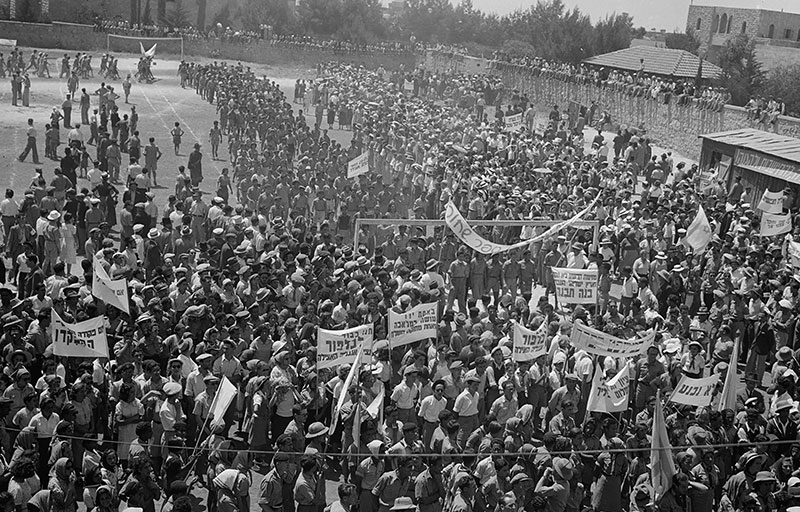
In addition, he tells us, Britain sought to control Palestine for geostrategic reasons. He fails to tell his readers what Balfour himself explained several times after 1917: that he had been motivated by a desire to do something for the Jews, because they had suffered greatly at the hands of the Christian world during the previous 1,900 years and because of the values and norms, including monotheism and the notions of social justice, that they had bestowed on humankind through the Old Testament. Certainly, as with any complex act of statecraft involving many players, motives were mixed, but Khalidi categorically rejects any humanitarian impulse behind the Balfour Declaration, which I believe is a mistake.
In spring 1936, the Arabs rebelled against British rule. Six months later, they suspended the rebellion, and the British set up a commission of inquiry, the Peel Commission, to look at their grievances. In July 1937, the commission proposed a “solution” based on ending the mandate and partitioning the country into two independent states. This was the first international proposal for a two-state settlement. The Jews were to be given 17 percent of Palestine, the Arabs about 75 percent. Khalidi tells us that “under this scheme,” the 75 percent “was to remain under British control or be handed over to . . . Abdullah.” Khalidi’s phraseology is crucially misleading. The commission also, somewhat obliquely, recommended that the Palestine Arab area be united with the neighboring Emirate of Transjordan, which was then ruled by Prince Abdullah, a British ward. (In the Peel scheme, the British, in a new mandate, were to retain some 8 percent of the country, consisting of Jerusalem and Bethlehem, with their holy sites, and a corridor from these towns to the Mediterranean.)
The Palestine Arabs and the surrounding Arab states—though not Abdullah—flatly rejected the Peel proposals and, in October, renewed the rebellion, which was to last until spring 1939, when it was finally crushed by the British, with a little help from the Zionists. The Arabs had managed to kill some 500 Jews and about 150 British soldiers; they had suffered 2,000–5,000 dead. Khalidi tells us that the rebellion was so fierce and widespread that the British deployed “100,000” troops to suppress it. This is a vast exaggeration. British forces in Palestine in 1936–1939 never numbered more than 40,000, if that.
After the rebellion, the British government, in May 1939, issued a new policy statement. The new British rules severely curtailed Jewish immigration, limiting it to 75,000 over a five-year period, with any further immigration contingent on Arab agreement (which everyone knew would not be forthcoming). The White Paper also promised the country’s Arab majority population (the majority assured by the limitations on Jewish immigration) independence within 10 years and radically curbed future Jewish land purchases.
The Arabs, led by Husseini, rejected the White Paper, and Khalidi more or less endorses that rejection, saying that the British could not be trusted to implement the announced policy and that the Jews had been given veto power over the promised independence with Arab majority rule. Khalidi adds: “In any case, it was already too late. The Chamberlain government had only a few months left in office when it issued the White Paper, Britain was at war very soon afterward, and Winston Churchill, who succeeded Chamberlain . . . was perhaps the most ardent Zionist in British public life.” But this is nonsense. In May 1939, there was no reason to believe that Chamberlain would not continue to rule for years, and in any case, he remained prime minister for another year, until May 1940, not just for “a few months.” And Churchill, though a pro-Zionist, stuck for reasons of state to his predecessor’s anti-Zionist policy through World War II, including the drastic curb on Jewish immigration, even as European Jews were being butchered by the Nazis.
Most historians of the British Mandate believe that the Palestinian Arabs, in rejecting the 1939 anti-Zionist White Paper, shot themselves in the foot (or perhaps higher), but not Khalidi. He sympathetically cites points made in the memoirs of Dr. Husayn al-Khalidi, his uncle, the sometime mayor of Jerusalem and a member of the Arab Higher Committee, the governing body of the Palestine Arab national movement. “It was their [i.e., the British] consistent support for the Zionists that most angered Dr. Husayn,” Khalidi tells us. He fails to fully acknowledge that in 1938–1939 the British, under the impact of the Arab Revolt, fearful of the impending world war against the German-Italian-Japanese coalition, and wanting to keep the Arab world onside or at least neutral, about-faced and turned anti-Zionist (and were to remain so, in effect, down to the mid-1950s).
Khalidi’s treatment of the Arab-Zionist conflict during World War II and its aftermath is equally misguided and suffers from a string of assertions and omissions that distort the reality of what happened. Khalidi stresses that “over twelve thousand” Palestine Arabs served in the British army in World War II—a figure that is probably double the true figure, with most serving as service personnel, not combatants, in bases inside Palestine. Khalidi produces this number to obfuscate the much larger truth—that, to judge by impressionistic evidence (in the absence of opinion polls), most Arabs, including most of Palestine’s Arabs, supported Germany and an Axis victory in World War II, if only because they hated the British, who had just crushed their revolt, and hated the Jews, who were their antagonists in Palestine. Representative is the diary of the prominent (Christian) Palestinian educator, Khalil Sakakini, who wrote on July 27, 1942, that Palestine’s Arabs had “rejoiced when the British bastion at Tobruk fell to the Germans. . . . Not only the Palestinians rejoiced . . . but the whole Arab world . . . not because they love the Germans, but because they dislike the English.”
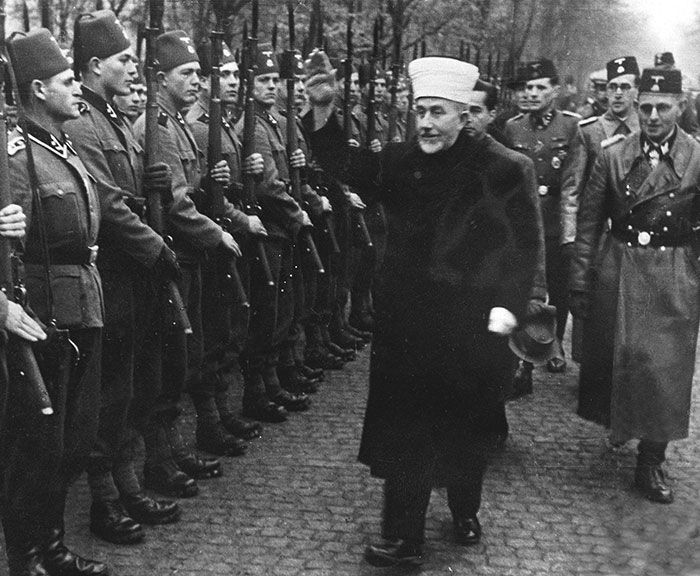
Similarly, Khalidi is far less than honest in his depiction of Husseini, the Palestinian national movement’s leader, when he obliquely mentions, in another context, that Husseini had spent time in Germany during World War II. Nowhere does Khalidi tell his readers that Husseini had supported the pro-Axis revolt in Iraq in 1941 and had fled to Berlin. There, Husseini was given a hefty salary to make anti-British radio broadcasts to the Middle East, calling on the Arabs to rebel against the Allies and kill the Jews. He also toured Yugoslavia to recruit Muslims for Germany’s SS and Wehrmacht and wrote letters to various European leaders, urging them to bar Jews from leaving their countries (thus perhaps indirectly contributing to their demise in the Holocaust). These are well-known, undisputed facts. Khalidi’s failure to mention them—he prefers to tell us what his father, who had little historical significance, was doing during the war—shows the extent to which he willgo to avoid an unvarnished look at his people’s narrative.
Following the Holocaust, the Zionist movement was energized to establish a Jewish state immediately, and much of the world—especially the United States—became sympathetic to the Jews’ aspirations. But Britain, now with a post-Churchill Labour government, remained opposed, and the Zionist underground groups launched a minirebellion against Palestine’s occupiers, ultimately claiming dozens of British lives. At the end of 1945, after President Harry Truman came out in support of the Zionists’ demand to allow 100,000 Holocaust survivors into Palestine, the two Anglo-Saxon powers set up the 12-man Anglo-American Committee of Inquiry to find a solution. Six months later, the committee issued its proposals: It endorsed Truman’s proposal on immigration but rejected the demand for a Jewish state. Instead, it avoided a clear verdict on the political solution and suggested a binational, one-state formula, while rebuffing the Zionist desire for Jewish statehood. Astonishingly, Khalidi summarizes the upshot this way: “The committee came to conclusions that mirrored precisely the desires of the Zionists.” The purpose of Khalidi’s distortion of the committee’s proposals is clear: yet another “proof” that the Anglo-Saxon powers remained subservient to Zionist aspirations.
Khalidi also presents his readers with a distorted picture of the workings of the next, crucial international committee that was to look into the Palestine problem, the UN Special Committee on Palestine. UNSCOP, created by the UN General Assembly and made up of representatives of states uninvolved in the conflict. At the end of August 1947, it submitted its recommendations, which were to serve as the basis of the historic UN General Assembly Partition Resolution of November 29, 1947. Like the Peel Commission before it, the UNGA proposed a two-state solution, but this time with 42 percent of the territory for a Palestinian Arab state and 55 percent for a Jewish state (most of it desert). Khalidi attributes the General Assembly’s pro-Zionist tilt to “the postwar realignment of international power”—meaning realpolitik and the emergence and influence of the two superpowers, the US and the Soviet Union—instead of to the various states’ sympathy for the Jews under the impact of the Holocaust. This is important for Khalidi, because if you concede that the member states were moved in large part by humanitarian concerns (and the Holocaust seemed to prove that the Zionists were right, that the Jews could not live in safety in the diaspora and needed a state of their own), then you are conceding the moral high ground to the Jews.
The UN vote—33 for, 13 against, and 10 abstentions—represented the overwhelming will of the international community, with all the world’s democracies except Greece and India (which had a large Muslim minority) supporting Jewish statehood within a two-state solution, and a cluster of dictatorships, most of them Arab and Muslim, voting against. But Khalidi doesn’t tell the readers any of this or, explicitly, of the Arab world’s reaction to the vote, which was a thunderous rejection. The Palestinians, for their part, immediately began shooting at Jewish pedestrians and traffic, marking the start of the 1948 war. Khalidi simply says, “The resolution was another declaration of war . . . a blatant violation of the principle of self-determination.” It was the Palestinians, backed by the Arab states, who unleashed the hostilities—but it was the Jews and their international supporters, by voting aye, who had “declared war” in Khalidi’s Orwellian formulation. The UN had issued “the international birth certificate for a Jewish state,” but it had also issued a birth certificate for a Palestinian Arab state, and the Arab world, along with the Palestinians, had rejected it. Ironically or not, today’s PLO leaders, 70 years on, refer to the 1947 resolution positively, as legitimation and a basis for their claim to statehood.
As with the first stage of the 1948 war, launched by Palestinian gunmen on November 30, 1947, Khalidi fails to tell his readers that the second stage of the war, from mid-May 1948 to 1949, was launched by the Arab states, whose armies in unison invaded Palestine on May 15. In circumlocutory fashion, he writes: “The second phase followed after May 15, when the new Israeli army defeated the Arab armies that joined the war.” That’s it, no Arab invasion, no pan-Arab aggression in defiance of the UN General Assembly resolution and the UN charter. Along the way, Khalidi further misinforms his readers that the US “offered [Israel] crucial military support.” This is nonsense. The US provided Israel with no weaponry (or money) during the 1948 war and did its best, in fact, to prevent clandestine arms from reaching the new state, even arresting American Zionist operatives.
Khalidi’s treatment of the war is very brisk: His focus is on the creation of the Palestinian refugee problem rather than on the hostilities or the politics surrounding them. Among the 700,000 Palestinians displaced from their homes (the Nakba, or disaster, as the Arabs call the 1948 war)—most of them to other parts of Palestine rather than out of the country altogether—were, Khalidi tells us, two of his grandparents, once residents of the village of Tal al-Rish, outside Jaffa. (Ironically, the building had housed one of the first groups of Zionist settlers, the Bilu’im, in the 1880s.)
Khalidi’s depiction of the conflict after 1948 is equally distorted. He paints a monochromatic picture of the Western powers as unstintingly supportive of Israel and inimical to the Palestinians, most of whom, in 1967, fell under Israeli military occupation, which has more or less continued ever since. As to the Soviets, while interested in expanding their influence in the Middle East through alliances with Arab regimes and arms sales, they, too, remained indifferent to the Palestinians’ plight.
The truth is far more complex. The United States, at least until the Kennedy and Johnson administrations in the 1960s, was largely unsympathetic toward Israel. In 1956, Washington even forced Israel to withdraw from the Sinai Peninsula it had just conquered in a war provoked by Egypt. Following the Six-Day War, the leading European states oscillated between support for Israel and criticism of its policies, especially vis-à-vis the Palestinians and the occupied territories.
Khalidi’s treatment of the attempted Arab-Israeli-American peacemaking in the 1990s, culminating in 2000, is particularly egregious. The Israelis are condemned for the continued expansion of the settlements and their failure to implement clauses in the Oslo agreements, while the Palestinian terrorism that usually provoked this nonimplementation is sidelined, minimized, or left unmentioned. Prime Minister Ehud Barak’s two-state proposals in Camp David in July 2000 are downgraded, and President Bill Clinton’s peace “parameters” of December 2000—by which the Palestinians were to get a state comprising the Gaza Strip, 94 to 96 percent of the West Bank (with the lost 4 to 6 percent to be offset by Israeli territory to be ceded to the Palestinians), half of Jerusalem, and half, or more, of Jerusalem’s Old City—and their acceptance by Israel and rejection by Yasser Arafat, amazingly, are never mentioned.
Apart from misinterpretations and distortions, the book contains a series of whoppers, almost all of them politically tendentious. For instance, on page 218, Khalidi tells us that by running a slate of candidates in the parliamentary elections of 2006 Hamas implicitly “accepted . . . the two-state solution,” which is to say Israel’s existence. In fact, Hamas, the Palestinian Muslim fundamentalist party and terrorist organization that governs the Gaza Strip, has never gone back on its 1988 founding charter’s espousal of the destruction of Israel as its primary goal.
And there are small mistakes of fact, many with political intent. It is not true that the Palestine Arab congresses, “from 1919 until 1928,” “put forward a consistent series of demands focused on independence for Arab Palestine.” The first congress, in January 1919, called for the incorporation of Palestine into Syria, not Palestine Arab “independence.” It is not true that the eruptions of Arab violence against Palestine’s Jews—in 1920, 1921, and 1929—were “often provoked by Zionist groups flexing their muscle” (whatever that may mean). Indeed, the British commissions of inquiry that followed each eruption usually found that the violence was Arab-initiated and unprovoked.
Chaim Weizmann in 1917 was not, as Khalidi would have it, Herzl’s “successor” (Herzl died in 1904); he was a prominent British Zionist who only became president of the (World) Zionist Organization in 1920. UN Security Council Resolution 242 of 1967 was not “crafted by the United States” but by Great Britain. Jumping to more recent times, the collision between an Israeli truck and a minivan carrying Arab workers which triggered the First Intifada occurred in Israel, not in the Gaza refugee camp of Jabalya; Arafat and the PLO were not “neutral” in the Iraqi invasion of Kuwait—they backed Saddam Hussein, Iraq’s leader; and so on.
In his treatment of Palestinian terrorism and Israeli counterterrorism in the 1970s and 1980s, Khalidi is prolix in his descriptions and condemnations of Israeli targeted assassinations. But his depiction of what happened has one particularly blatant omission: He fails altogether to mention Black September, the Fatah-PLO group that committed a series of brazen attacks, starting with the assassination of Jordanian prime minister Wasfi Tal in 1971 and including the infamous murder of Israel’s Olympic team in Munich in 1972. This helps Khalidi clear the main Palestinian party, the “moderate” Fatah, which remains the mainstay of the PLO, of terrorism while casting the blame for Palestinian terror on “unimportant” fringe groups, such as the Abu Nidal Organization or the Popular Front for the Liberation of Palestine.
Khalidi smooth-talks his way through history, painting the conflict in simplistic black and white colors. Throughout, perhaps with an eye to what his fellow Palestinians might say, he is careful not to give any potential ammunition to their Zionist foes and blames only one side for how matters unfolded.
The Hundred Years’ War on Palestine is not a new, revisionist history that challenges both Israeli and Palestinian readers with its reexamination of their respective narratives. It is simply poor history.
Comments
You must log in to comment Log In
Suggested Reading
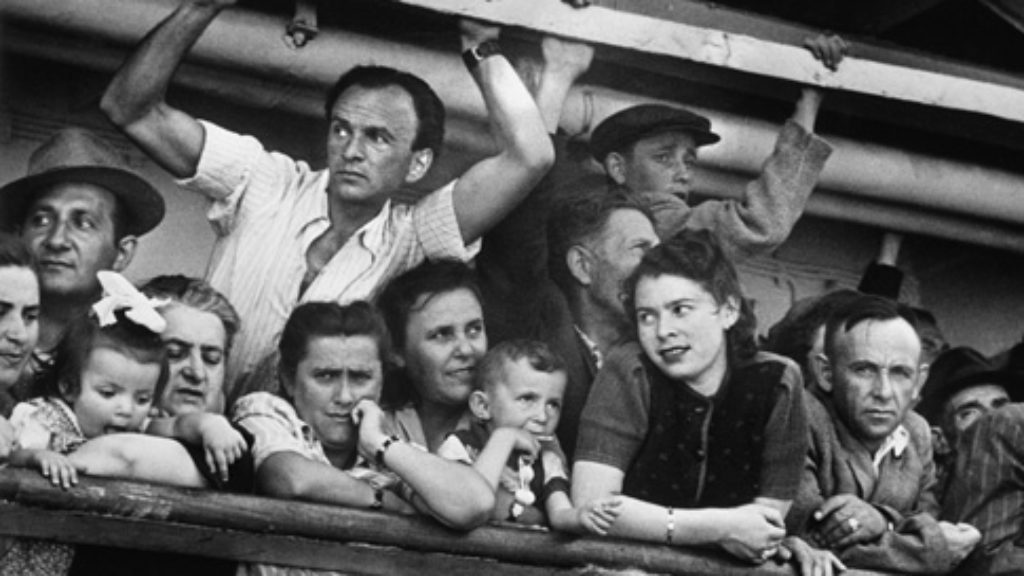
Robert Capa’s Road to Jerusalem
By all accounts, his own not least, Robert Capa was a womanizer, a heavy drinker, and a compulsive gambler who consistently lost his shirt everywhere from poker games at the front lines to European casinos. He was also a gifted, prolific photographer.
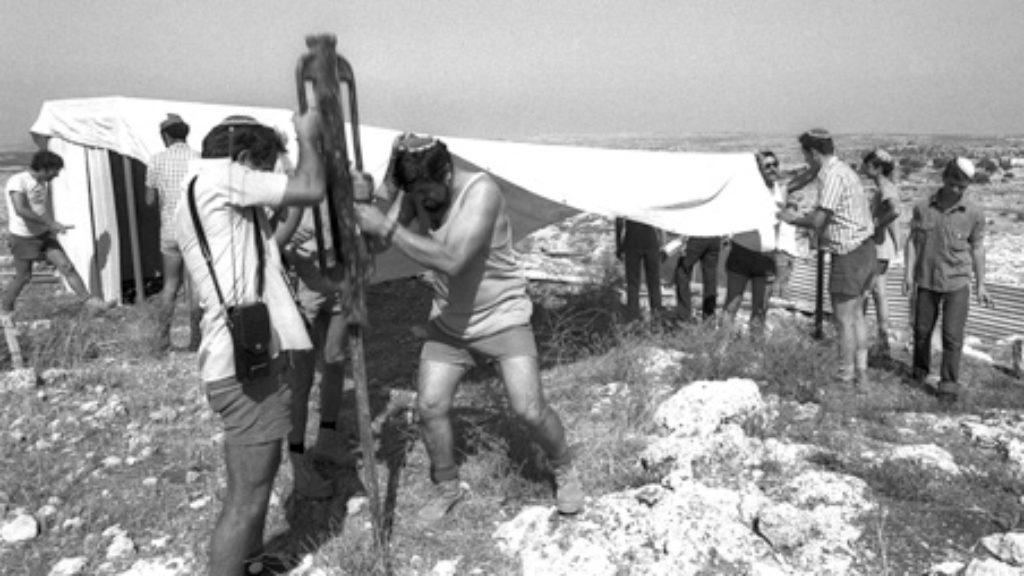
Adventure Story
Anita Shapira's new book raises the bar for short histories of Israel.
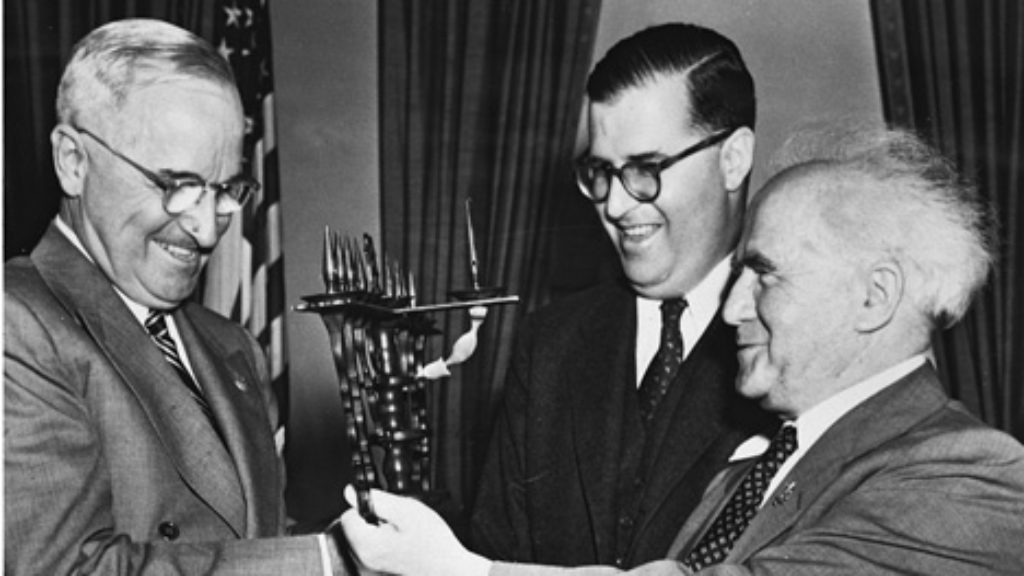
Shifting Daylight
Ross shows how the U.S.-Israel relationship has survived, and even thrived, since 1948 despite the radically different approaches taken by successive presidents.
Your Time Is Up: Jabotinsky at the Sixth Zionist Congress
The young Jabotinsky didn’t exactly take the Sixth Zionist Congress by storm. When he approached Chaim Weizmann, saying, “I hope I am not intruding,” Weizmann replied, “You are.” A newly discovered text, edited by Brian Horowitz and Leonid Katsis.
Robert Rockaway
Morris hits the nail on the head. He presents a balanced view of the problem without distorting the facts to favor one or the other side. Sad to say, his balanced and factual view will not change many opinions. As the cliche says, don't bother me with the facts. I know the truth.
L. King
An excellent article, with one error, but it supports Morris's argument. Morris refers to "the absence of opinion polls". In fact there was such a poll, reported in Hillel Cohen's "Army of Shadows" on page 175. The poll was conducted by Sari al Sakakini who worked at the US Consulate in Jerusalem in February 1941. Coincidentally he was the son of Khalil al Sakakini who is mentioned in the article. The poll showed that 88% of Palestinian Arabs surveyed supported Germany and only 9% supported Britain.